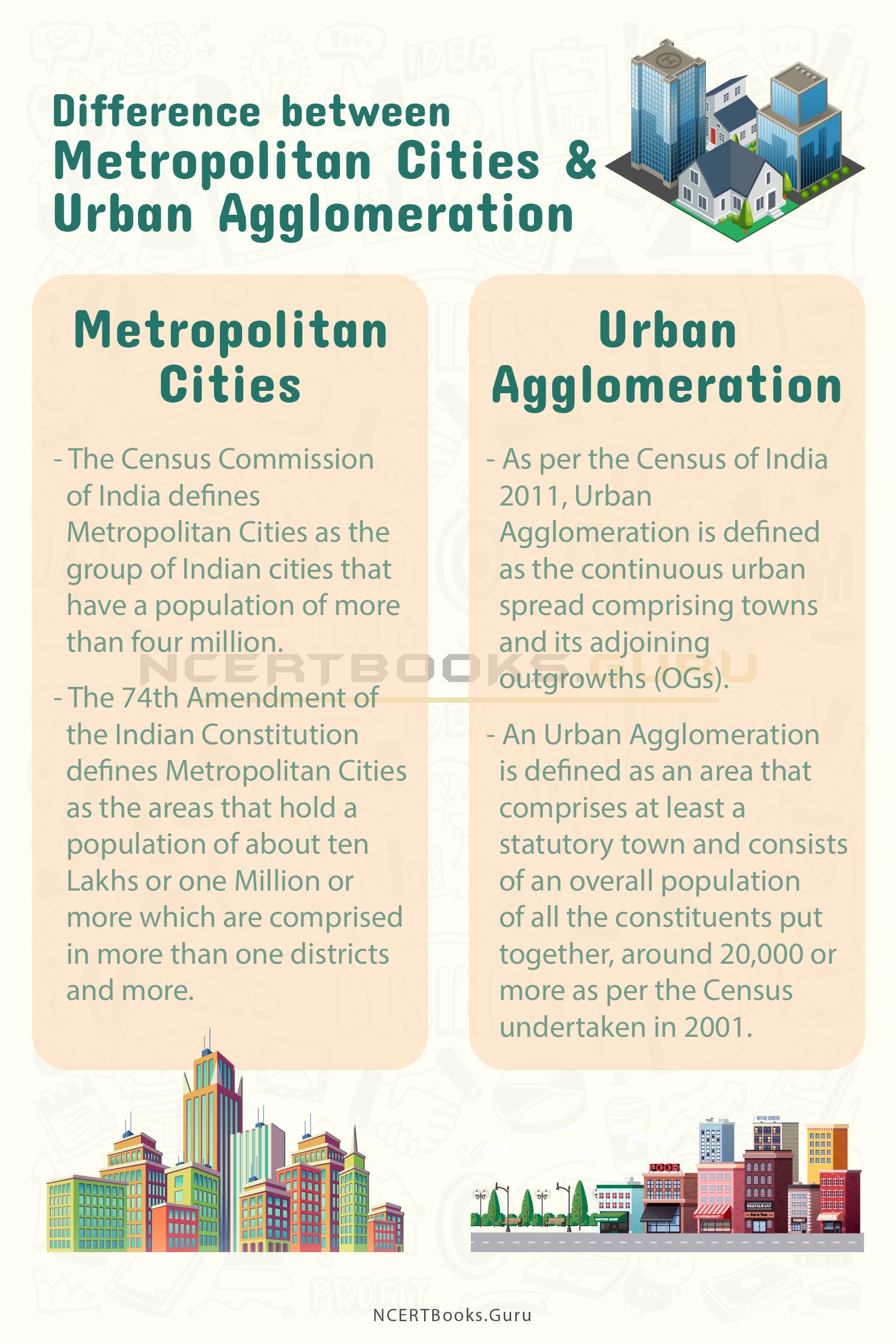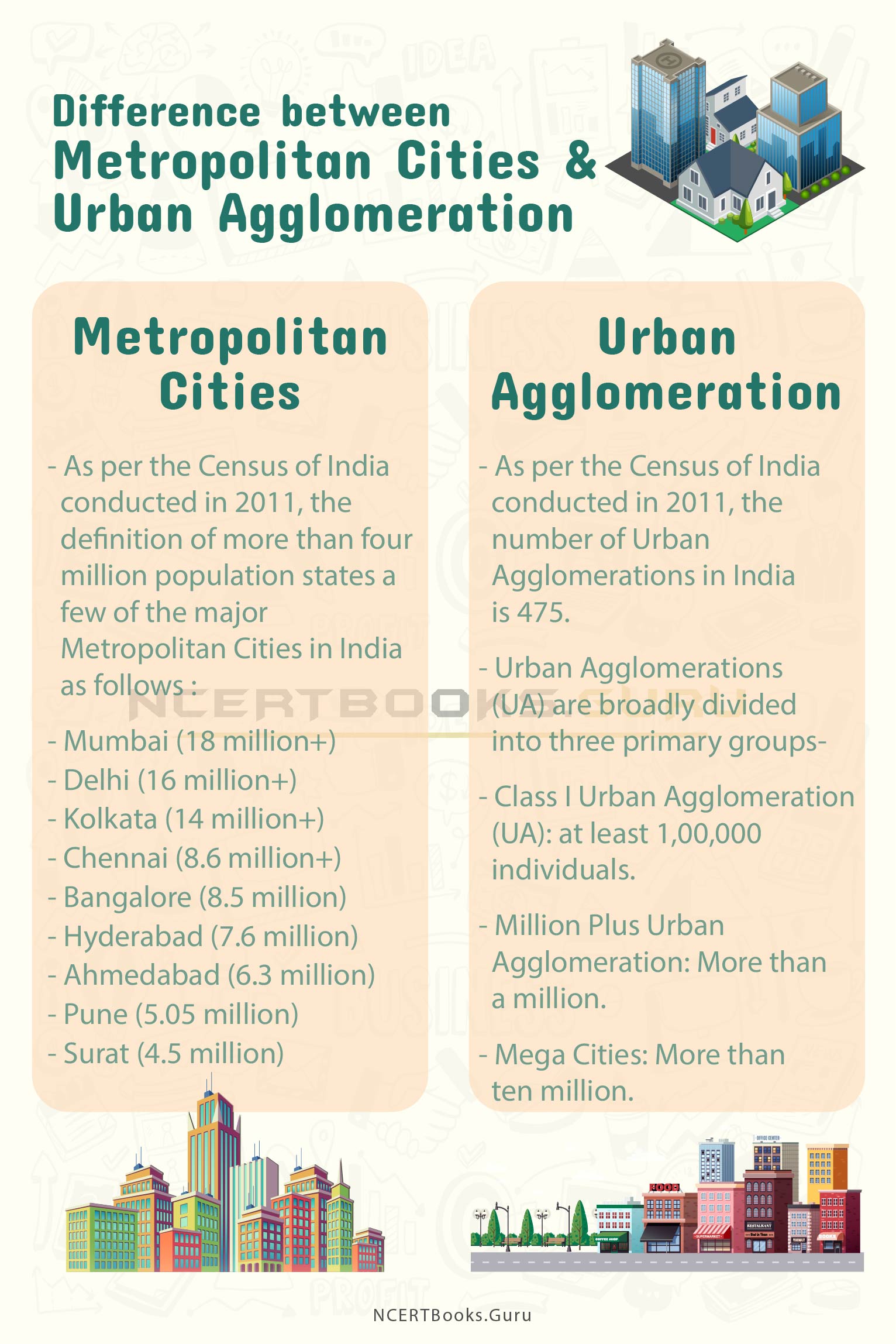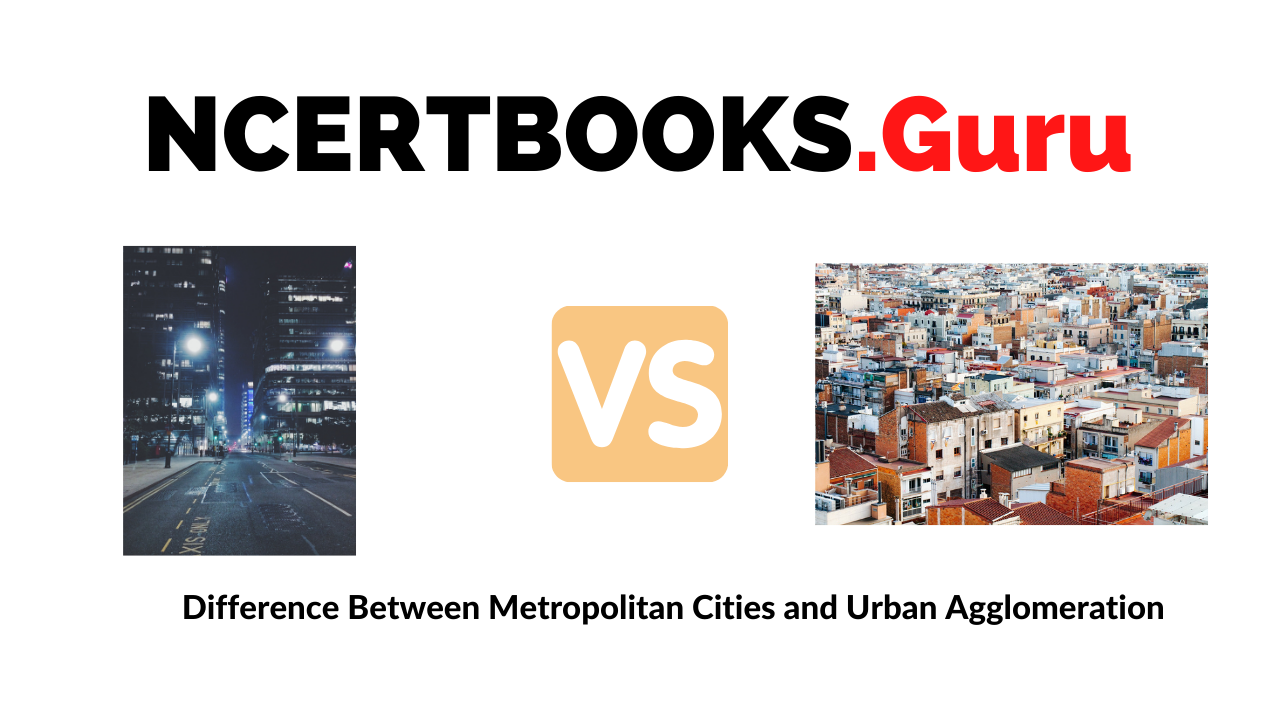Difference Between Metropolitan Cities and Urban Agglomeration: We often come across Metropolitan Cities and Urban Agglomeration, but do we know the meaning and the difference between the two terms. This article helps you comprehend the meaning and key differences between Metropolitan Cities and Urban Agglomeration terms.
You can also find differences between articles on various topics that you need to know. Just tap on the quick link available and get to know the basic differences between them.
What is the Difference Between Metropolitan Cities and Urban Agglomeration
The Census Commission of India defines Metropolitan Cities as the Indian cities that comprise a population of more than four million. As per the Census of India conducted in the year 2011, an Urban Agglomeration is defined as the continuous urban spread comprising town and its adjoining outgrowths or two or more physically adjacent towns put together with or without the outgrowths of such towns.
To better comprehend the topic- Difference Between Metropolitan Cities and Urban Agglomeration, let us understand the difference in a detailed manner.
Difference Between Metropolitan Cities and Urban Agglomeration
The key differences between Metropolitan Cities and Urban Agglomeration in India are as follows-

| Metropolitan Cities | Urban Agglomeration |
| The Census Commission of India defines Metropolitan Cities as the group of Indian cities that have a population of more than four million.
The 74th Amendment of the Indian Constitution defines Metropolitan Cities as the areas that hold a population of about ten Lakhs or one Million or more which are comprised in more than one districts, and that also comprises one or more Panchayats, Municipalities, and other adjacent areas that are specified by the Governor under a public notification that it has to be a Metropolitan area. |
As per the Census of India 2011, Urban Agglomeration is defined as the continuous urban spread comprising towns and its adjoining outgrowths (OGs). It even comprises two or more physically adjacent towns formed together with or without outgrowths of such towns.
An Urban Agglomeration is defined as an area that comprises at least a statutory town and consists of an overall population – of all the constituents put together, around 20,000 or more as per the Census undertaken in 2001. However, there are other local conditions that vary accordingly where similar and other combinations have been considered as an Urban Agglomeration, thus, satisfying the basic conditions of contiguity. |
As per the Census of India conducted in 2011, the definition of more than four million population states a few of the major Metropolitan Cities in India as follows:
|
As per the Census of India conducted in 2011, the number of Urban Agglomerations in India is 475. As per the Census of India conducted in 2001, the number of Urban Agglomerations was accounted to be 384. Urban Agglomerations (UA) are broadly divided into three primary groups- Class I Urban Agglomeration (UA) – This section comprises a population of at least 1,00,000 individuals. Million Plus Urban Agglomeration (UA) – This section comprises a population of one million or above. However, 42.6 per cent of the Urban population are residing in these Million Plus Urban Agglomerations. Mega Cities – Among the Million Plus Urban Agglomerations or Cities, in India, there are three very large Urban Agglomerations with more than ten million persons, known as Mega-Cities. |

